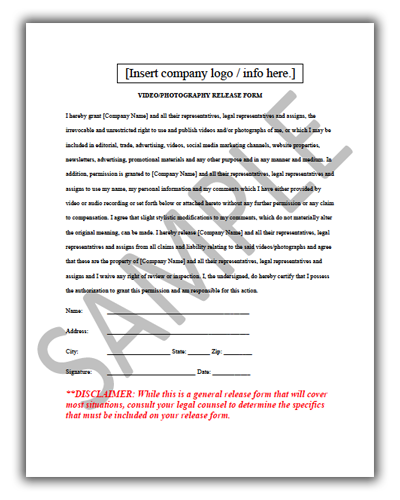There’s no doubt that videos are becoming an increasingly important part of marketing and customer education. With continual advancements in smartphone and tablet technology, you can easily capture quality video content on your mobile devices. These professional videos can encourage sales, educate your customers on product usage or safety tips and help you connect with potential new customers. You don’t want to “over produce” videos, though, and make them seem too commercial. However, here are 6 basic tips to keep in mind to achieve maximum quality and even build better relationships with your customers.
1. Hold device horizontally.
When recording a video on your smartphone or tablet, hold the device horizontally. In this position, the video will fit the full screen during playback and will capture more of the scene. If you hold the device vertically, you’ll find that the resulting footage will seem “skinny” when played on a laptop or computer screen and will result in large black bars on both sides of the video.
2. Consider an extra microphone.
Depending on the setting, it is likely that relying on the microphone on your smartphone or tablet will not be enough to capture adequate audio. An investment in a lapel microphone that can connect into the headphone port of your device is inexpensive and will make a big difference in the audio quality for your video. Also, plan to stand 3-6 feet from the subject you are taping, such as one of your salespeople introducing a new product.
If the lapel microphone is not wireless, you may also want to purchase an extension cable to extend the connection distance between the end of the microphone cord and your recording device.
3. Eliminate background noise.
While there are many resources that will help you capture quality audio, it is still important to be aware of any surrounding noises. When outside, too much wind can cause issues with the sound quality. Instead of a clear voice, your subject may sound muffled. Select a location that can help block as much noise as possible.
Additionally, if recording in a crowded area like a trade show, it’s wise to take a test shot to see if the microphone should be adjusted to be closer to the speaker’s mouth. You don’t want other voices and sounds drowning out your subject.
4. Check the backdrop.
It’s also important to be aware of everything that is captured within the screen while recording. You don’t want anything that may take away from the main focus of the video, so make sure the background is tidy and clear of all distractions.
Lighting can also cause issues with the background, so if you’re shooting indoors, turn on lights and allow as much natural light in as possible so your video doesn’t turn out dark. Also, avoid positioning your subject in front of a window to avoid any shadow images.
5. Avoid yes/no questions.
Be sure to avoid asking yes or no questions when recording an interview. By asking open-ended questions, you’re more likely to prompt the subject to provide a more detailed response versus a short answer. For instance, if you’re interviewing a customer about a piece of equipment they bought, don’t ask, “Are you happy with the tractor you purchased from our dealership?” Instead, say, “What do you like about this tractor?” Then, plan a follow-up question like, “How will you use it on your property?”
These types of question will help your subject speak naturally about different topics related to the equipment or the dealership.
6. Don’t forget the extra footage.
If possible, you should record additional footage to enhance the final, edited video. For example, if you are showcasing a product, try to capture footage of the product in action or to show specific features of the product while it’s discussed. If you are at a trade show, include additional footage of activities at your exhibit.
This is part of the “show” vs. “tell” approach and will help your customers get a better feel for what you’re trying to convey.
To complete the video editing, use a simple editing program to assemble the videos. If you have a Mac, iMovie is an easy program to use and offers a wide array of editing features. Windows users can edit videos with Windows Movie Maker.
Final Words of Advice
While recording, don’t get frustrated if you think the video is less than perfect. Once you replay the clip, you may decide it is the perfect segment to weave into the overall video.
Also, if you’re interviewing customers or others, don’t forget to have individuals you record sign a release form. This will ensure they are aware of how the video will be used and give you authorization to use their statements. Click here to see a sample release form, but be sure to consult your legal team for any specific information that you must collect on the form.
Following these tips will assist your dealership in creating quality video content that can have a positive impact on your overall marketing, sales and customer service goals.






Post a comment
Report Abusive Comment